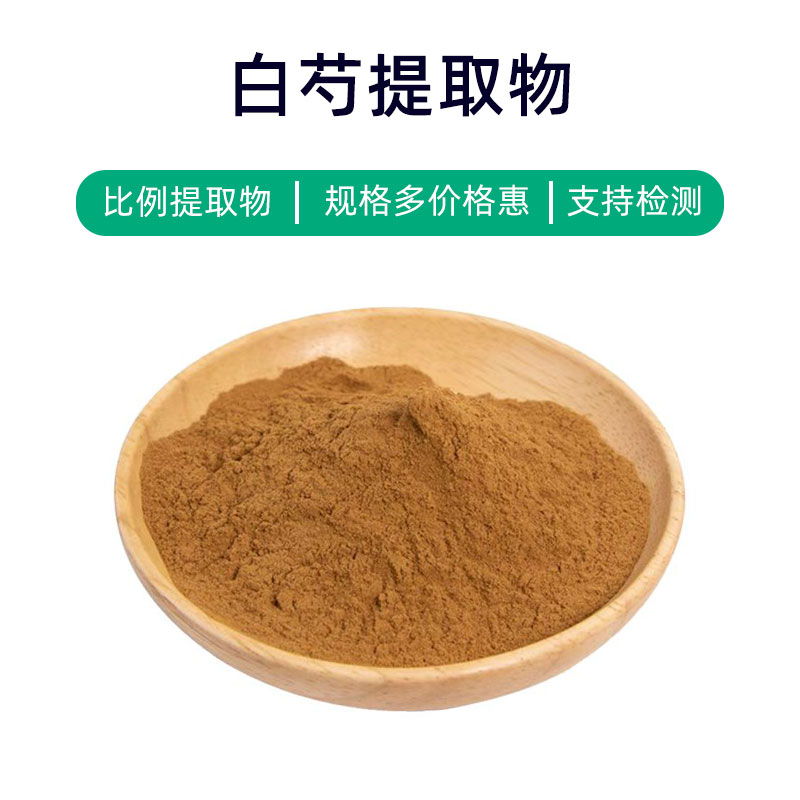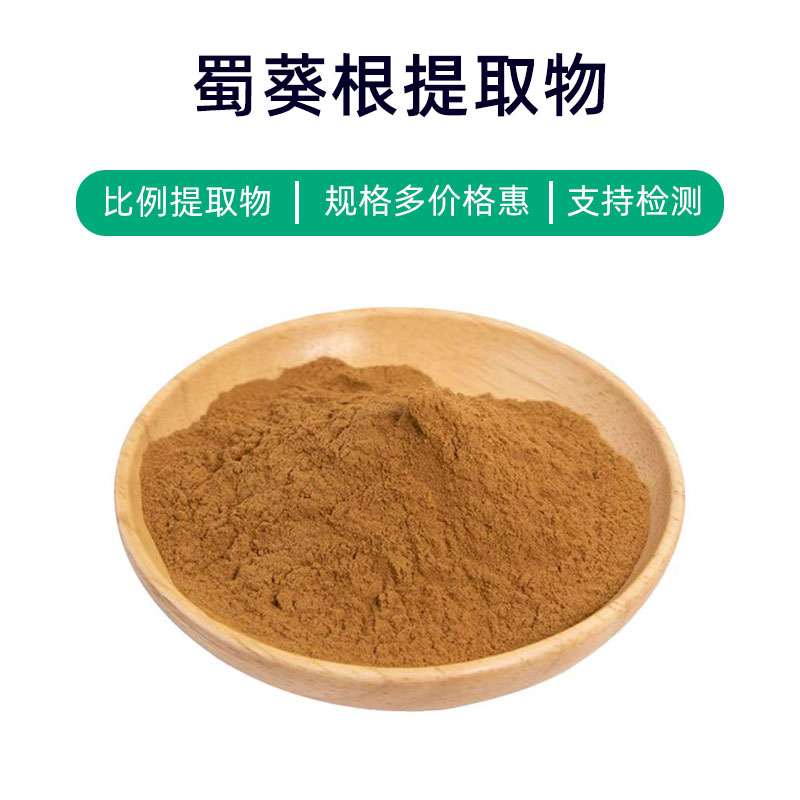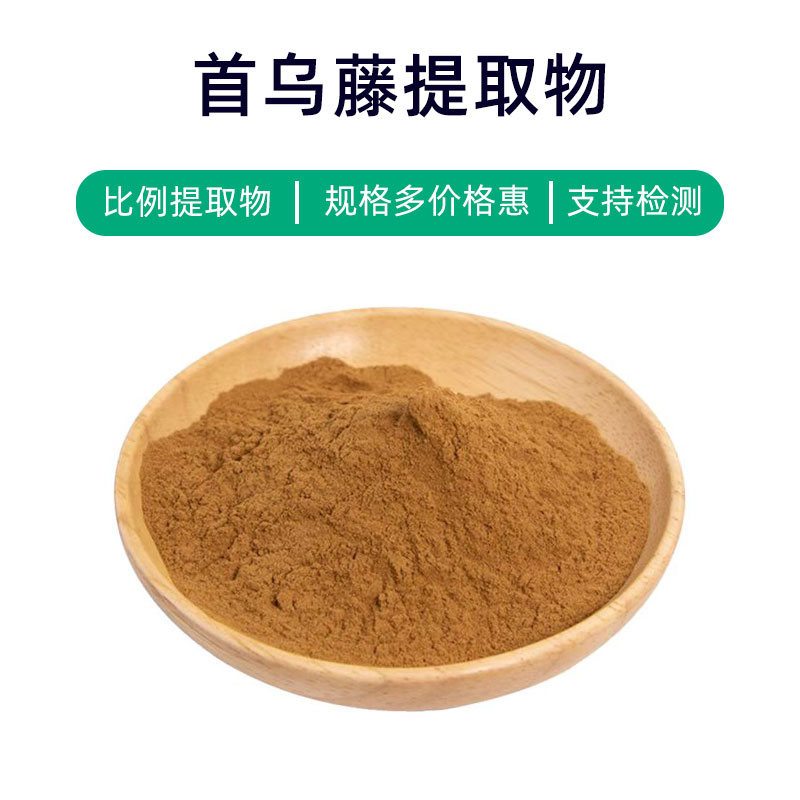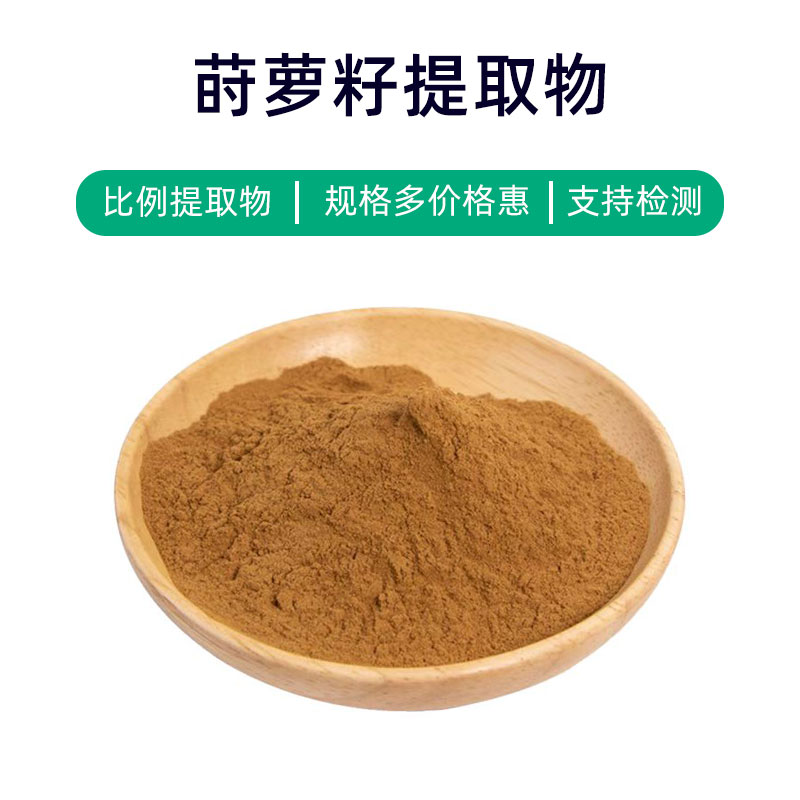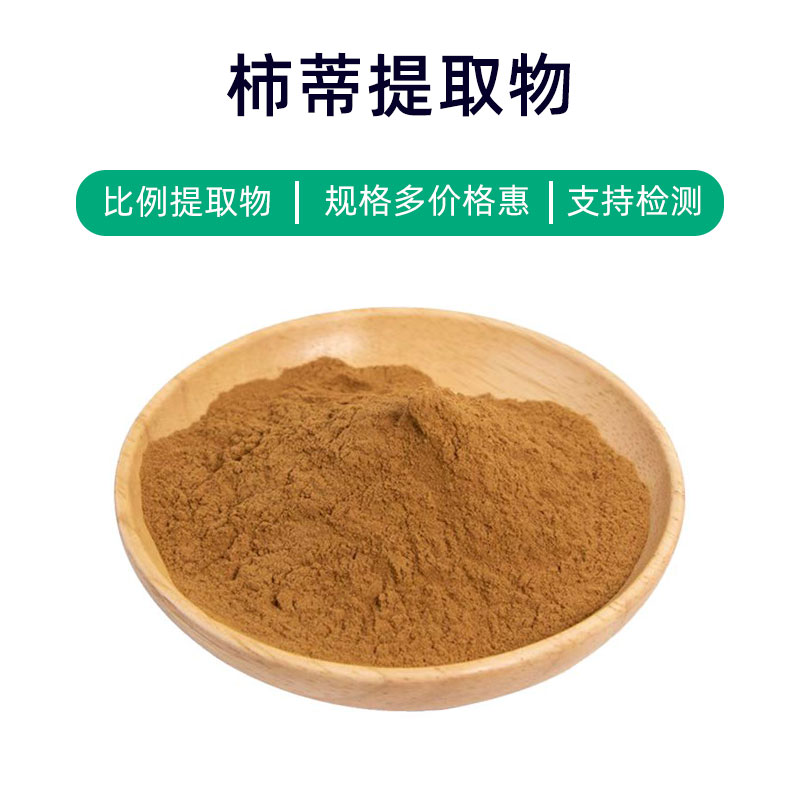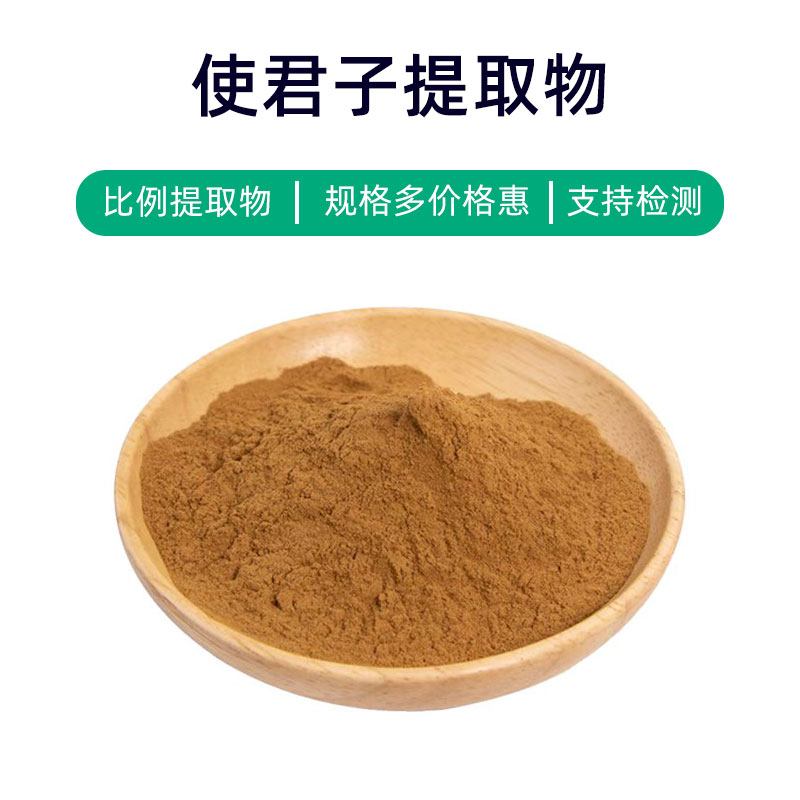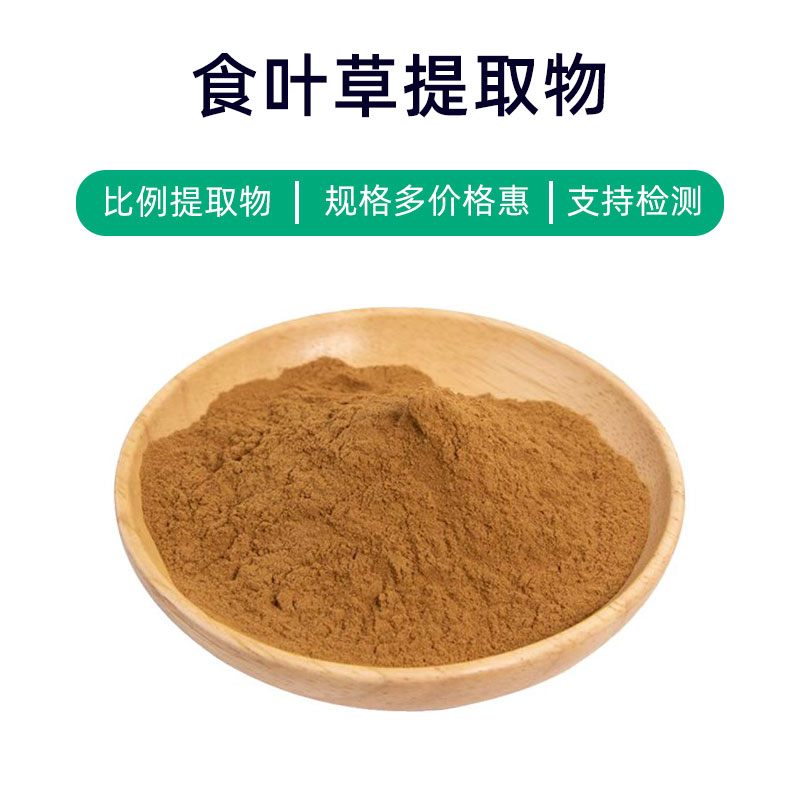White Peony Extract Product Introduction
White Peony Extract is a natural plant extract derived from the root of the white peony plant. Its main components include active ingredients such as paeoniflorin, paeonol, and isopaeoniflorin, which have various benefits including antioxidant, anti-inflammatory, immune regulation, and skin whitening effects.
White Peony Extract is extensively utilized in the fields of medicine, dietary supplements, and cosmetics. In the pharmaceutical sector, it is often used as an ingredient in traditional Chinese medicine formulations to regulate immune function, alleviate inflammation, and improve blood circulation. In the health product sphere, it is commonly made into oral supplements aimed at enhancing skin health and overall wellness. Moreover, it is frequently incorporated into cosmetic products for its skin benefits, including brightening and soothing properties.
Due to its natural and safe characteristics, White Peony Extract is highly favored and demonstrates significant potential for various applications.
White Peony Extract Production Process
The production process of White Peony Extract typically involves the following steps:
- Raw Material Preparation: Select fresh white peony roots as the extraction material, wash to remove impurities, and let them dry for later use.
- Crushing and Extraction: Crush the prepared white peony roots and use an appropriate solvent (such as ethanol or water) for extraction. During the extraction process, parameters like temperature, time, and solvent concentration must be strictly controlled to ensure extraction efficiency and product quality.
- Filtration and Concentration: Filter the extract to remove solid particles and impurities, then apply concentration techniques (like vacuum concentration or membrane evaporation) to evaporate the solvent, yielding a concentrated extract.
- Crystallization and Separation: Use techniques like crystallization or gel adsorption to separate and purify active components from the extract, resulting in a higher purity White Peony Extract.
- Drying and Crushing: Dry the separated White Peony Extract to reduce moisture content within a specified range, then crush to obtain a powdered extract.
- Packaging and Storage: Package the produced White Peony Extract, typically in airtight packaging to prevent moisture and oxidation. Store in a cool, dry place, avoiding direct sunlight and high temperatures.
The entire production process needs to have strict control over each operational parameter to ensure product quality and safety. Additionally, it must comply with relevant production standards and regulations to ensure product compliance and stability.
White Peony Extract Effects and Side Effects
White Peony Extract is a commonly used medicinal herb with various effects and benefits, primarily including:
- Anti-inflammatory and Antibacterial Effects: White Peony Extract contains multiple active components that exhibit anti-inflammatory and antibacterial properties, effectively inhibiting inflammatory responses and bacterial infections, assisting in alleviating skin inflammation and infections.
- Pain Relief and Muscle Relaxation: White Peony Extract has pain-relieving and muscle-relaxing properties, helping to ease pain in muscles and joints, and improving limitations in movement; it is often used to treat conditions like rheumatoid arthritis and fractures.
- Antioxidant and Anti-aging: Rich in a variety of antioxidant compounds, White Peony Extract can eliminate free radicals in the body, slow down cellular aging, and protect skin from environmental damage, showing certain anti-aging effects.
- Immune Function Regulation: This extract can help regulate immune system function, enhancing the body's immunity and resistance, aiding in the prevention of colds and other respiratory infections.
- Endocrine Regulation: Some active components in White Peony Extract can help regulate endocrine system function, providing relief for women's menstrual irregularities and dysmenorrhea.
While White Peony Extract has numerous benefits, there are potential side effects and precautions to be aware of during use:
- Allergic Reactions: Some individuals may experience allergic reactions to White Peony Extract, such as skin itching or redness. It is advisable to conduct a skin sensitivity test prior to use and to discontinue if any discomfort arises.
- Digestive Issues: Prolonged or excessive use may lead to digestive issues, such as nausea or diarrhea; hence, it is recommended to use under medical guidance.
- Caution for Pregnant and Nursing Women: Due to the pharmacological properties of White Peony Extract, pregnant and nursing women should consult a healthcare professional before use to avoid potential effects on fetal or infant health.
Overall, White Peony Extract is a safe and effective herbal remedy, but dosage should be appropriately managed to avoid adverse reactions. If any side effects are experienced during use, consult a healthcare professional immediately and discontinue usage.
White Peony Extract Application Scenarios and Dosage
White Peony Extract finds extensive utility in the medical, food, and cosmetic industries, with its properties making it a vital ingredient in many products.
- Medical Applications:
- White Peony Extract is commonly used in traditional medicine formulations, including granules, pills, and oral liquids. In TCM, it is frequently employed to supplement qi and blood, promote blood circulation, and alleviate pain, often applied in treating menstrual irregularities, dysmenorrhea, and rheumatoid arthritis.
- Dosage: Common forms include granules and pills, with the general recommendation for adults being 3-9 grams orally, twice to three times daily, or as advised by a healthcare professional.
- Food Applications:
- Used as a food additive, White Peony Extract enhances nutritional value and flavor in products. It is found in dietary supplements, functional foods, and seasonings, such as capsules and powders.
- Dosage: Follow product labeling or healthcare professional recommendations; doses vary based on product type and individual circumstances.
- Cosmetic Applications:
- White Peony Extract is valued for its antioxidant, soothing, and calming properties, often added to cosmetics, such as face masks, lotions, and serums, for skin protection, pigmentation reduction, and slowing aging.
- Dosage: Adhere to product labeling or healthcare professional guidelines, conducting a patch test before normal use to ensure there are no adverse reactions.
In summary, White Peony Extract has a broad range of applications in the medical, food, and cosmetic fields. Attention should be paid to product types, dosage, and individual conditions to avoid adverse reactions. In medical contexts, it is advised to use under healthcare professional supervision; in food and cosmetic applications, selecting reputable products and following guidelines is essential for safety and effectiveness.
White Peony Extract Source Plant Introduction, Distribution, and Growth Environment
White Peony Extract is widely utilized in medicine, food, and cosmetics for its myriad benefits, making it a key component in many products.
- Medical Applications:
- White Peony Extract is commonly used in traditional medicine formulations, including granules, pills, and oral liquids. In TCM practices, it is widely applied to harmonize qi and blood, invigorate circulation, and relieve pain, frequently employed in treating menstrual irregularities, dysmenorrhea, and rheumatoid arthritis.
- Dosage: Common presentations include granules and pills, with recommendations typically suggesting 3-9 grams per dose, taken 2-3 times daily, or as per a healthcare professional's guidance.
- Food Applications:
- White Peony Extract serves as a food additive, enhancing nutritional value and taste within various products. It is prevalent in supplements, functional foods, and flavorings, such as capsules and powders.
- Dosage: Generally follow product instructions or healthcare professional recommendations, with amounts varying based on product type and individual circumstances.
- Cosmetic Applications:
- White Peony Extract provides antioxidant, soothing, and calming effects, commonly incorporated into cosmetics like masks, lotions, and serums, serving to protect the skin, diminish pigmentation, and slow down aging.
- Dosage: Typically follow product guidelines or healthcare professional advice, conducting a patch test for skin sensitivity before regular use.
Overall, White Peony Extract has diverse applications across medical, food, and cosmetic sectors. Users should monitor product types, administration, and individual needs to prevent adverse effects. It is recommended to utilize under professional oversight in medical settings, and ensure the purchase of legitimate products in food and cosmetic applications, adhering to guidelines for safety and effectiveness.
White Peony Extract Processing and Storage
When processing and storing White Peony Extract, several key considerations should be addressed:
- Processing:
- The processing of White Peony primarily involves harvesting, drying, and extraction. During harvest, select fully-grown flowers for collection, avoiding any damaged specimens. Once picked, immediate air drying is necessary to prevent mold. Subsequently, proper drying techniques should be employed, ensuring temperatures are appropriate to avoid discoloration or quality degradation. Lastly, the extraction phase typically employs methods such as aqueous or alcoholic extraction.
- Storage:
- White Peony Extract should be stored in a cool, dry, and well-ventilated environment, avoiding direct sunlight and high-temperature, humid conditions. Airtight sealing can extend its shelf life by preventing moisture contact, thus preserving quality.
- During storage, avoid exposure to harmful gases to safeguard against oxidation. Regularly inspect the extract for visual and olfactory anomalies, addressing any irregularities promptly to maintain quality and safety.
Proper processing and storage methodologies can uphold the quality and efficacy of White Peony Extract, extending its shelf life and enhancing its application value and economic benefit.
Monica Sun is a seasoned expert in the plant extraction industry with over a decade of experience in research and production. She specializes in the extraction and purification of plant active ingredients, focusing on driving innovation in natural product applications. Monica has participated in the development of multiple functional plant extracts, delivering high-value natural raw material solutions for the health food, pharmaceutical, and dietary supplement sectors.

